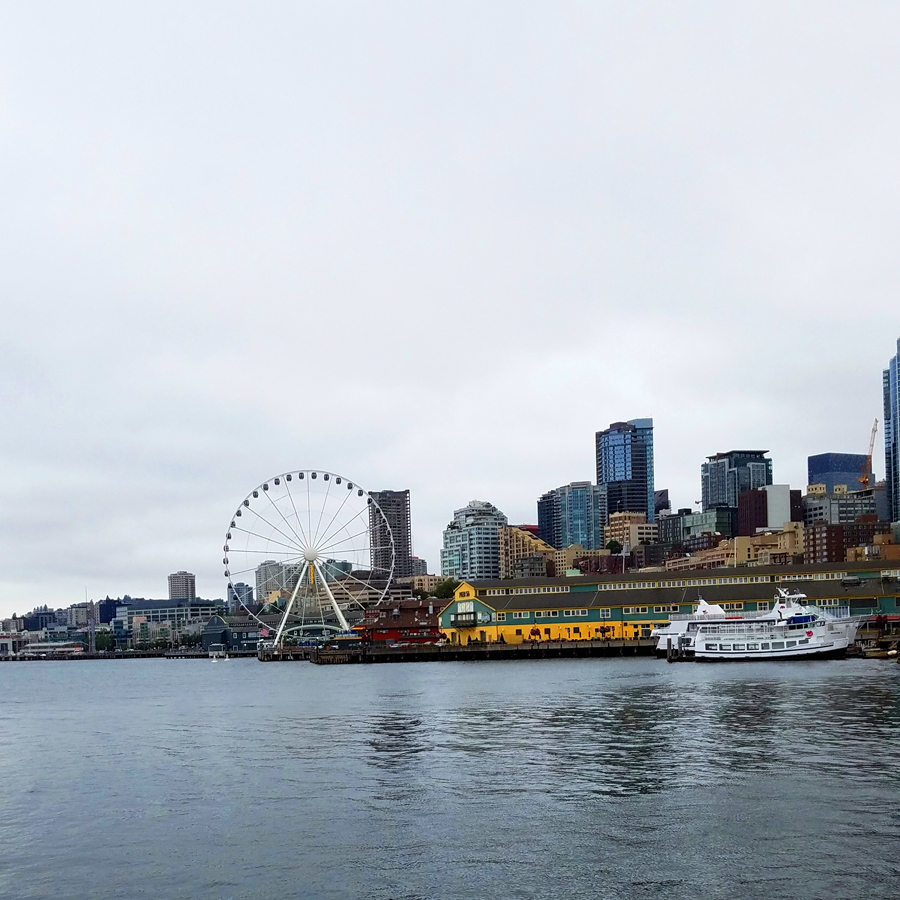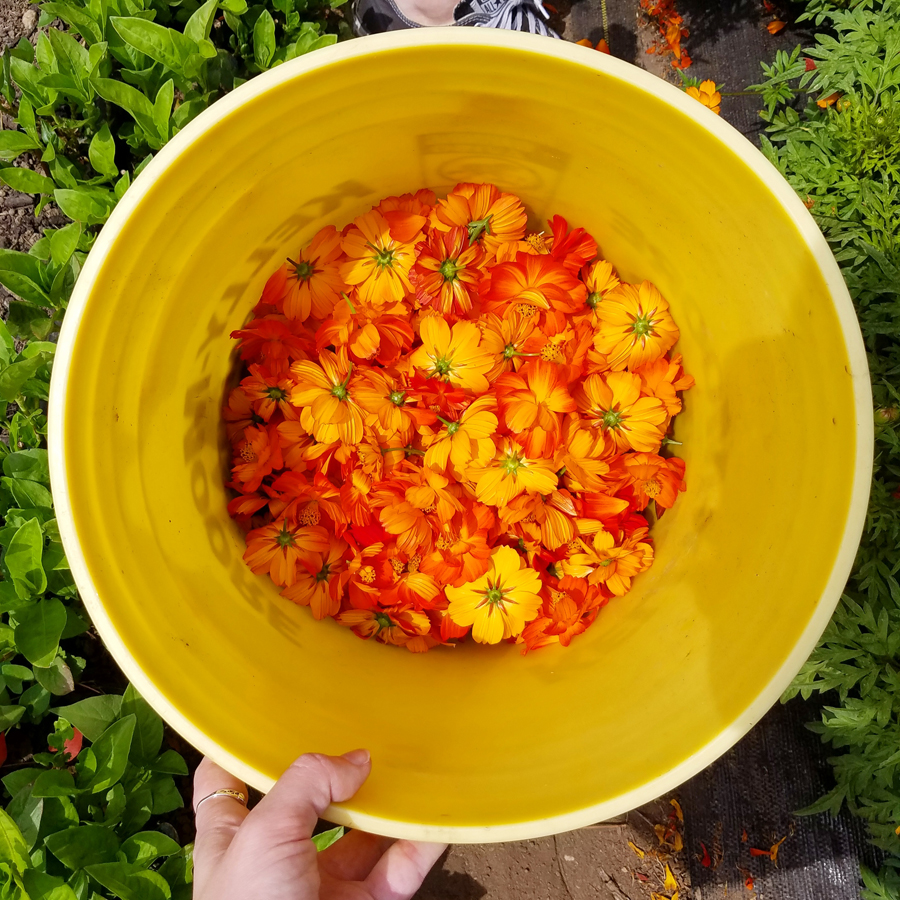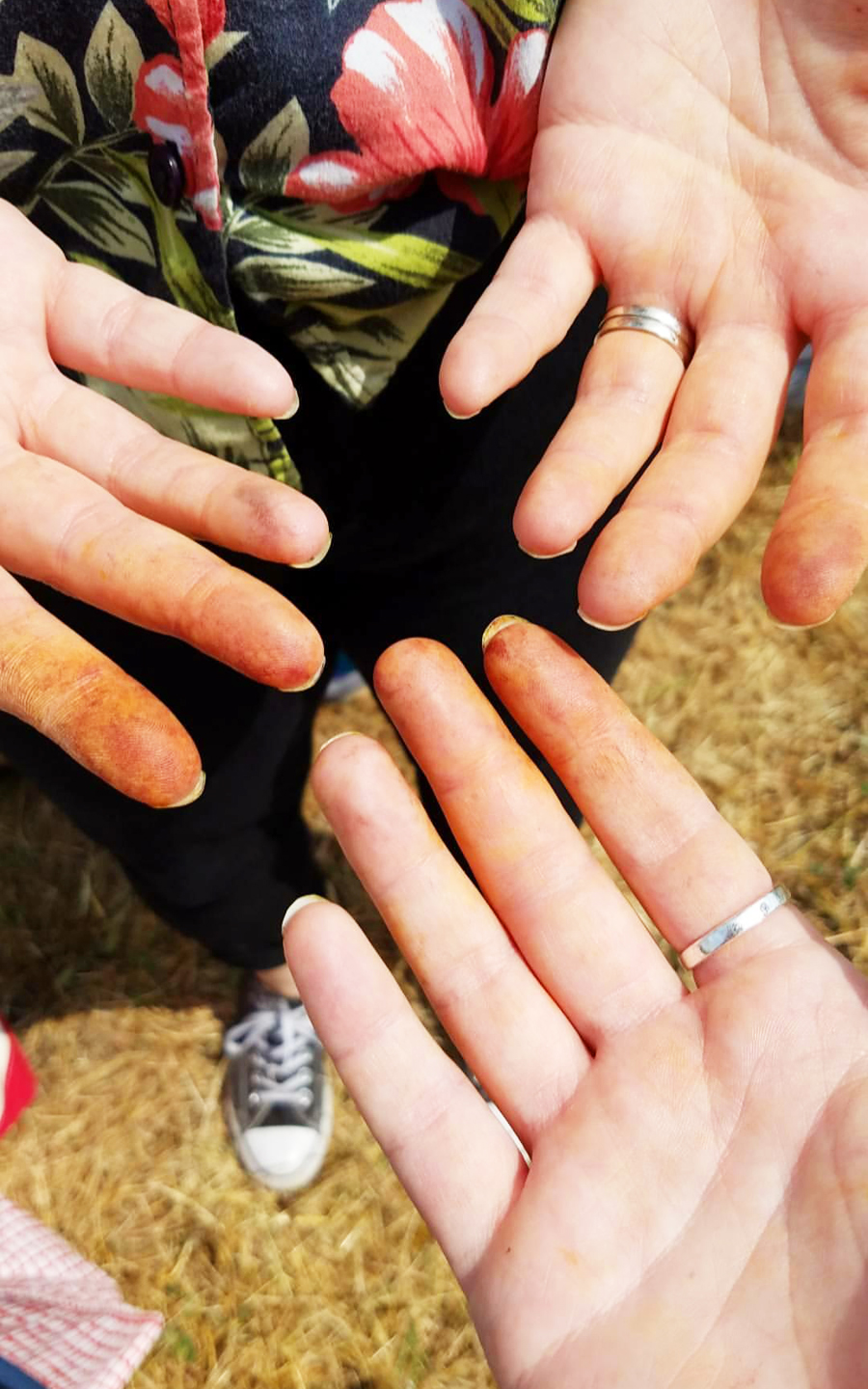Last summer, my friend Erin and I signed up for a natural dye class on Bainbridge Island with Local Color Fiber Studio. Although I was doing fun fibery stuff and taking photos all last year, I was really off my blogging routine, so I’ve been doing a bit of catching up this year because some things like my New Zealand trip and this class were too fun to not share.

To get to Bainbridge from Seattle, you have to take a ferry, and to play it safe and avoid the risk of not being able to board a ferry at a busier time closer to when our class started, Erin suggested that we get on an earlier ferry and grab breakfast on the island. Although I’m not a morning person, I love going out for breakfast and brunch, so I agreed.

We went to the Madison Diner, which is in an amazing train-dining-car-style building. A lot of the decor has been maintained throughout the building’s life, and it has all of the best vintage vibes, and pretty dang good breakfast.

After loading up on pancakes, coffee, and eggs, we made a quick detour to grab drinks and sandwiches from the grocery store for lunch later, and it was time for our class!

We drove out to the field where Emily from Local Color was growing dye plants at the time (She now has a farm in Puyallup.), and met the group of other students. Emily gave us a brief overview of the plants she had growing and the colors they’d make, and then we got picking!

It takes a ton of plant material to get enough dye to do a batch of yarn, so we were filling large buckets with flowers and leaves. I was unsurprisingly drawn to the flowers that would produce yellows, golds, and oranges, but there were also indigo plants, cabbages, and flowers that produced cooler colors.

After picking pounds of flowers, our hands were very stained, which is exciting when you’ve got plans to dye! I also got a bee sting in the process, so I had a bonus red lump on one of my fingers. I felt guilty about that because I had gotten overly confident and less cautious about not disturbing bees as the day went on, and without looking, I had grabbed a flower with a bee on it.

The whole dye materials went into dye pots with water over heat. With the exception of indigo, which has to be processed differently, all of our dye materials were steeped in hot water to release their color. The plant material would then be removed leaving the dye-filled water, and textiles that were treated with mordant would go in the pots to dye.
While waiting for the dye materials to steep, we learned about two different mordants, and then we got to eco-print some silk scarves. Eco-printing is a dye method where you artfully place whole flowers and leaves on a piece of fabric (like a woven scarf or a yarn blank) that has been treated with mordant, roll them up tight, and then steam the piece. The flowers and leaves will leach dye only around where they’re touching, leaving distinctive patterns. I eco-printed a scarf to give my mom as a birthday present, and unfortunately didn’t get any pictures of it! This is also where I stopped taking pictures of the dye process because I was too busy.
The indigo was the first to be ready for our attention, and as I mentioned above, it has to be processed differently. When it’s almost ready to be used, it needs to get oxygen incorporated, so it had to be poured from one pot to the other. When items went in to dye, they came out a beautiful shade of green that turned to blue as the dye oxidized. It was fascinating to watch. The other dye pots were much more straight forward, and the yarn that went in came out in its final color.

We got to take home some of the yarn we dyed. I chose three skeins, and from left to right, they were dyed using coreopsis, cabbage, and marigolds. I was thinking they’d look nice together, although I will have to be careful to avoid making something the resembles a candy corn!
Leave a Reply to Sew Old Fashioned Cancel reply